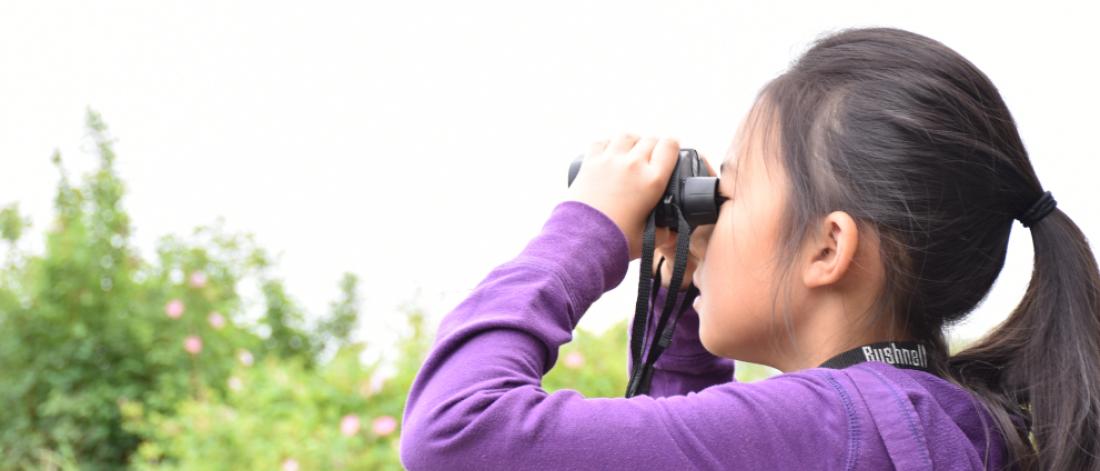
Resources for Outdoor Learning
Teachers! Ensure you have the right knowledge, tools and confidence to take your students outdoors.
Stewardship begins with a relationship to place. Strengthen your students' sense of place with regular and repeated visits to a local park.
Playing and exploring outdoors will naturally lead to student-led inquiry, an increased understanding and appreciation of place, and a desire to care for the spaces your students come to know.
These free resources were created for Surrey K–7 teachers and students and can be adapted for both the early years and secondary students.
Prepare for your park visit
Set an example for your students – do your research, act responsibly, and make environmental stewardship a priority.
- Know where to go. Ensure you are on public property with permitted access. Refer to COSMOS (the City of Surrey Mapping Online System) and see our COSMOS Tips for Teachers to get started.
- Consider your environmental impact. Stay on trails and open lawns. Do not pick, trample or remove plants, flowers, berries or other natural items. Leave things how you found them.
- Give wildlife space. Watch animals from trails to minimize stress. Do not feed them or disturb their nests. Animals are safer and healthier when they don't become accustomed to people.
- Pack it in, pack it out. Have students take their litter home if possible. Do not leave unnatural items in parks (e.g., painted rocks, fairy houses).
- Stay out of creeks. Footsteps can stir up silt in streams (which can suffocate fish and destroy spawning habitat) and crush salmon eggs. Do not create new trails to access creeks.
- Be prepared. Check the forecast, dress for the weather, and scan the space before visiting.
Before you head out, review:
Learn local nature knowledge
Specific to Surrey, these resources will help you to identify, learn and teach about local species.
- Nature Through the Seasons
- Plants and Fungi to Know
- Animals to Know
- Shade Tree ID
- Shade Tree ID – half page (print double sided, flip on long edge, cut in half)
- Shade Tree ID – full page (print single or double sided, flip on long edge, do not cut)
- Shade Tree ID – web
- Native Plant ID
- Native Plant ID – half page (print double sided, flip on long edge, cut in half)
- Native Plant ID – full page (print single or double sided, flip on long edge, do not cut)
- Native Plant ID – web
Help your students become community scientists. Check out iNaturalist's Teacher Guide or download Seek by iNaturalist.
Get started
Incorporate these short, adaptable activities into your lessons to help establish a routine and help students better connect with place.
Investigate local plants and shade trees
Use these activity instructions and their accompanying templates to guide your study of local plants and shade trees, including how they change through the seasons.
- Nature’s Calendar
- Phenology Wheel (best printed as 11x17)
- DIY Plant Field Guide
- Shade Tree Journal
- Shade Tree Journal – booklet (print double sided, flip on short edge, fold in half)
- Shade Tree Journal – full page (print single or double sided, do not fold)
- Shade Tree Survey – Teacher's Guide
- Shade Tree Survey – booklet (print double sided, flip on long edge, fold in half)
- Shade Tree Survey – full page (print single or double sided, flip on long edge, do not fold)
"Dig Deeper" into local urban forestry topics
These guiding questions, background information and curriculum connections are designed to be used as launching points for inquiry projects, or to prepare for and/or follow your park visits.
Package resources to enhance learning
The resources on this page are designed to complement each other and when used together will deepen students’ learning.
Suggested combinations include:
How well do you know your neighbourhood shade trees?
Shade trees contribute significantly to the livability of our city. Help students learn which trees are growing around your school, what sets them apart, the benefits they provide, and how to care for them.
How in tune are you with the seasonal changes of local plants and animals?
Being aware of and knowledgeable about local biodiversity greatly enhances students’ sense of place. Use a phenology study to incorporate regular and repeated visits to an outdoor space throughout the school year.
What can we learn about the urban forest?
When we picture a forest, we often imagine a large, wild and dense growth of evergreen trees. Another type of forest, the urban forest, surrounds us right here in Surrey. What can we learn about the urban forest?
How well do you know your local park?
With over 200 parks in Surrey, there’s a lot to explore, and each is special in its own way. Visit a local park and investigate what makes it unique. Think about the plants and animals that live there, how people use the space, the park’s amenities, and its history.
Contact
For more information on these resources, contact stewardship@surrey.ca.